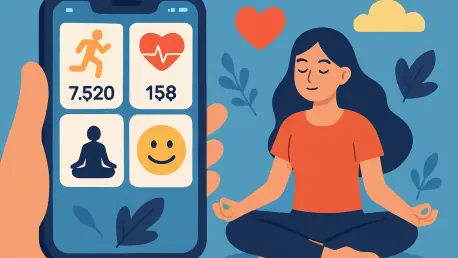I’m thrilled to sit down with Ivan Kairatov, a renowned biopharma expert with a wealth of knowledge in tech and innovation within the industry. With his extensive background in research and development, Ivan brings a unique perspective to the intersection of technology and health. Today, we’re diving into the often-overlooked downsides of fitness apps, exploring how these popular digital tools can impact users’ behavior and mental well-being. Our conversation touches on the emotional toll of app features, the limitations of tracking algorithms, and the need for designs that truly prioritize user health over mere numbers.
Can you share what sparked your interest in studying the negative effects of fitness apps?
Honestly, it started with observing how these apps, while marketed as game-changers for health, sometimes left users feeling worse off. We heard anecdotes from friends and colleagues about feeling pressured or even guilty when they didn’t hit app-set goals. That got us curious about whether this was a broader issue. Plus, most research out there focused on the benefits, so we saw a real gap in understanding the potential harm these tools could cause.
Why did you choose to analyze social media posts from X as the foundation for your research?
X stood out because it’s a platform where people tend to share raw, unfiltered opinions. Unlike curated reviews or survey responses, posts on X often capture real-time frustrations or emotions. It gave us a window into genuine user experiences with fitness apps, which felt more authentic than other data sources we considered.
Could you explain the Machine-Assisted Topic Analysis method in simple terms for our readers?
Sure, think of it as a teamwork between technology and human insight. We used AI to sift through thousands of X posts and identify recurring themes or patterns, like complaints about app notifications. Then, our team stepped in to interpret those patterns, adding context and nuance that a machine might miss. It’s a way to handle huge amounts of data without losing the human touch in understanding emotions and experiences.
Your study highlighted feelings of shame and demotivation among users. Can you elaborate on what aspects of these apps seem to trigger those emotions?
Absolutely. A lot of users mentioned app notifications as a big culprit—those constant reminders about missed workouts or calorie goals can feel like a personal jab. If you’re already struggling, getting a pushy alert saying you’ve ‘failed’ can hit hard. It turns a tool meant to help into something that makes you feel judged or inadequate, which is the opposite of motivating.
Another finding was the issue of oversimplified algorithms for tracking things like calories. What exactly does that mean, and why is it a problem?
What we mean by oversimplified is that many apps boil down complex things like nutrition or exercise into basic numbers—calories in, calories out, or just step counts. But human bodies aren’t that straightforward. These algorithms often ignore factors like metabolism or stress, so the data can feel inaccurate or misleading. Users told us they felt frustrated when their hard work wasn’t reflected in the app’s feedback, which made them question whether their efforts even mattered.
Technical issues with fitness apps also came up a lot in your research. What were some of the most common complaints you encountered?
Users frequently pointed to glitches, like the app crashing during a workout or failing to sync with wearable devices. Others struggled with interfaces that were just too clunky or confusing to navigate. These problems aren’t just annoyances—they disrupt the whole experience and can sap someone’s motivation to keep using the app or even stick with their health goals.
Your findings suggest that fitness apps need a more user-centered design. Can you paint a picture of what that might look like in practice?
A user-centered design would focus on the person, not just the metrics. Imagine an app that asks about your mood or energy levels before suggesting a workout, rather than pushing a one-size-fits-all plan. It could offer encouragement instead of criticism, maybe celebrating small wins rather than fixating on missed targets. The goal is to build intrinsic motivation—making users want to stay active because it feels good, not because they’re chasing a number.
Looking ahead, what’s your forecast for the future of fitness apps and their impact on health and well-being?
I think we’re at a turning point. As awareness grows about these psychological pitfalls, I expect developers will start prioritizing mental health alongside physical goals. We might see more apps integrating features like mindfulness prompts or customizable goals that adapt to individual needs. But it’ll take a shift in the industry mindset—moving away from gamification and rigid stats toward genuine support for well-being. If that happens, fitness apps could truly become tools for holistic health rather than sources of stress.









